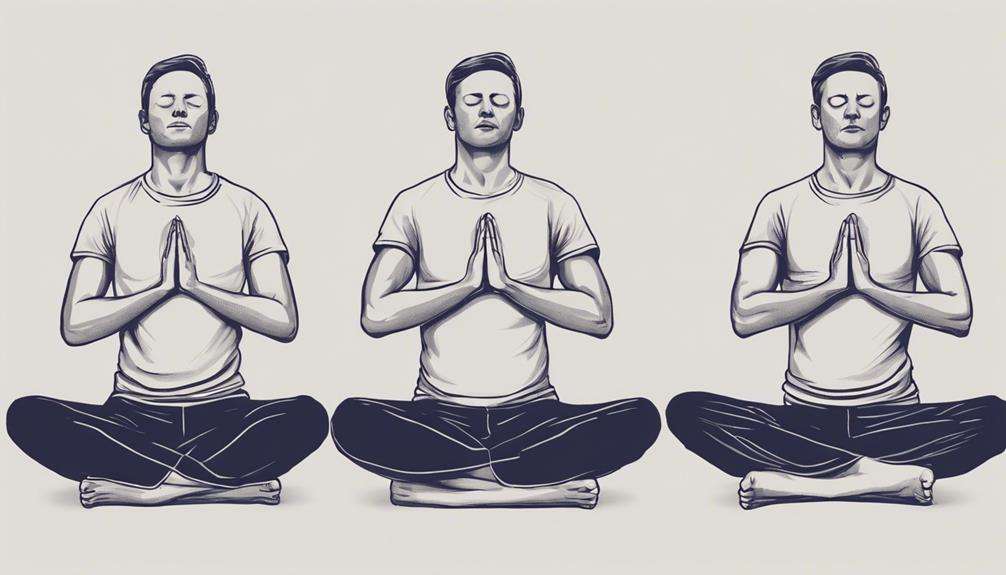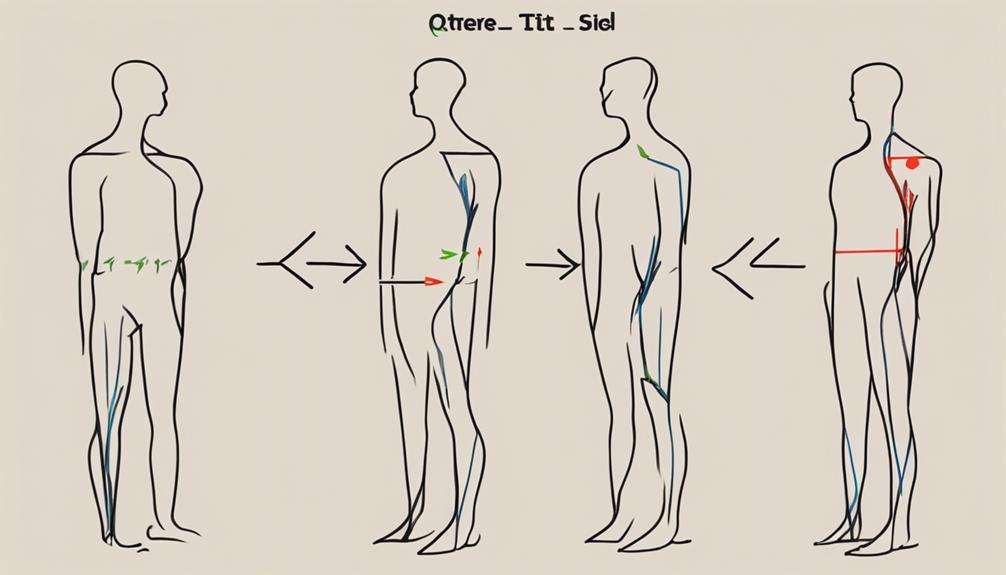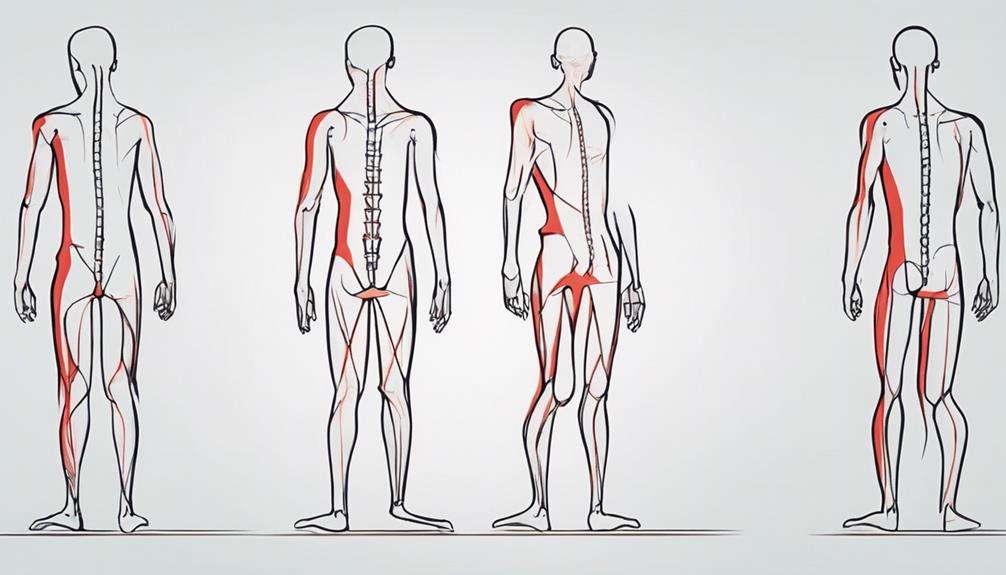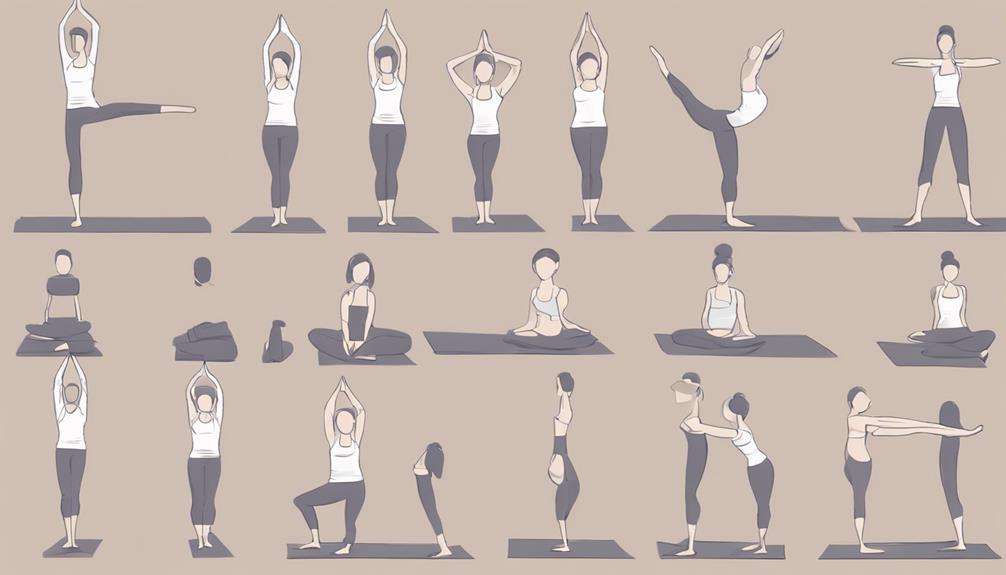If you've been feeling a tad out of sync lately, it might be time to ponder a few adjustments to bring your mind and body back into harmony.
By exploring five practical methods to align your mental and physical well-being, you can make significant strides towards achieving a more upright and balanced posture.
Remember, a straight spine not only exudes confidence but also contributes to overall health and vitality.
So, why not start on this journey of self-discovery and transformation to reveal the secrets of a poised and aligned self?
Key Takeaways
- Practice mindful breathing and yoga poses for improved posture and well-being.
- Engage in meditation and visualization techniques to enhance body awareness.
- Use mind-body alignment exercises like tai chi for muscle balance.
- Focus on relaxation and stress reduction to support proper body alignment.
Mindful Breathing Techniques
To improve your posture and overall well-being, start by incorporating mindful breathing techniques into your daily routine. Mindful breathing involves focusing on your breath to bring awareness to the present moment. Deep breathing, particularly diaphragmatic breathing, can help engage the diaphragm for efficient oxygen exchange in the body. By practicing mindful breathing regularly, you can align your mind and body, leading to better posture and overall health.
When you focus on your breath, you not only reduce stress and lower blood pressure but also improve oxygen flow to your brain. This can have a positive impact on your muscle alignment and back health. Mindful breathing can also enhance relaxation, improve concentration, and promote emotional well-being.
Incorporating Yoga Poses
Incorporate yoga poses into your routine to enhance your posture and overall well-being through strengthening core muscles and promoting body awareness. Specific poses such as Tree Pose, Cat-Cow Stretch, and Warrior II can help improve body alignment, correcting imbalances that may lead to poor posture. By practicing yoga, you cultivate mindfulness, which plays a crucial role in bringing alignment to both your mind and body. Regular engagement in yoga can also alleviate muscle tension, contributing to better posture overall.
Yoga not only enhances flexibility but also builds muscle strength, which is essential for supporting proper posture. The focus on core muscles in yoga poses is particularly beneficial for stabilizing the spine and maintaining a healthy posture. By integrating yoga into your routine, you can address imbalances, increase body awareness, and work towards a more aligned and upright posture. Prioritize incorporating these poses into your daily practice to experience the benefits of improved posture and overall well-being.
Meditation Practices for Posture
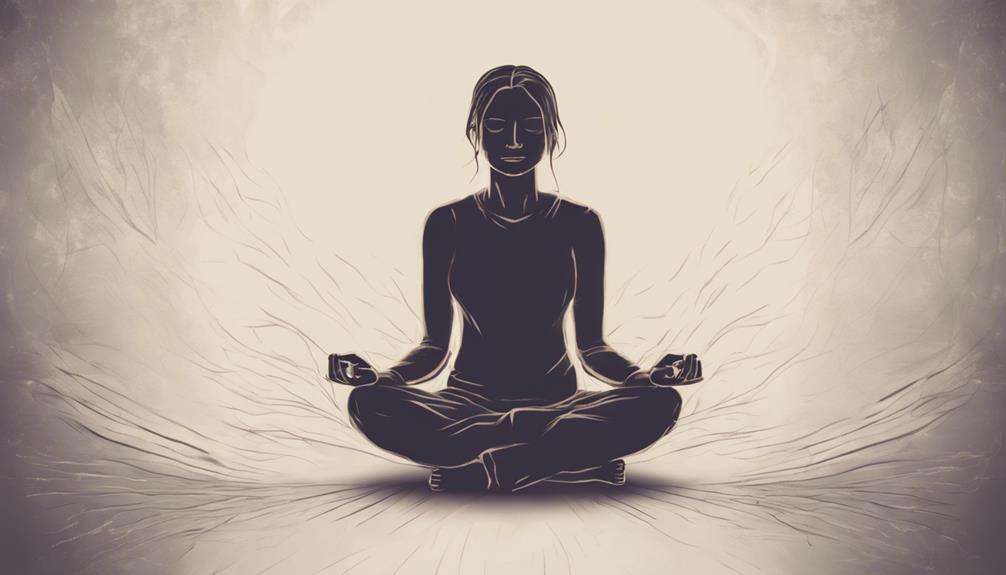
Enhancing your posture through meditation practices involves cultivating body awareness and mindfulness to align your mind and body effectively.
Meditation offers mindful breathing techniques that can help relax muscles and align the body correctly, reducing stress and tension that may be impacting your posture negatively.
By incorporating meditation into your daily routines, you can support your overall posture improvement efforts. Regular meditation sessions can lead to a more relaxed and aligned mind-body connection, allowing you to be more in tune with your body's needs and positioning.
Through consistent practice, you can learn to relax muscles critically, which is essential for maintaining good posture. Remember, mindfulness in meditation isn't just about calming your mind; it's also about being present in your body and making subtle adjustments to align yourself correctly.
Start integrating meditation practices into your daily routine to see improvements in your posture and overall well-being.
Visualization for Alignment
Visualizing proper alignment of your body parts is key to improving your posture effectively. When you imagine a straight line running from your head to toe, you can mentally align your body for good posture. This mental imagery not only helps in achieving body alignment but also aids in reinforcing muscle memory.
Picture your spine balanced and aligned, as this can greatly impact your posture. By using visualization techniques, you can enhance your awareness of body positioning, which in turn contributes to better alignment. Correct posture starts with the way you envision your body's alignment.
Practice visualizing yourself in the correct posture regularly to train your mind and body to work together towards achieving the best alignment. Through consistent mental imagery and focus on body alignment, you can make significant strides in improving your posture and overall well-being.
Mind-Body Awareness Exercises
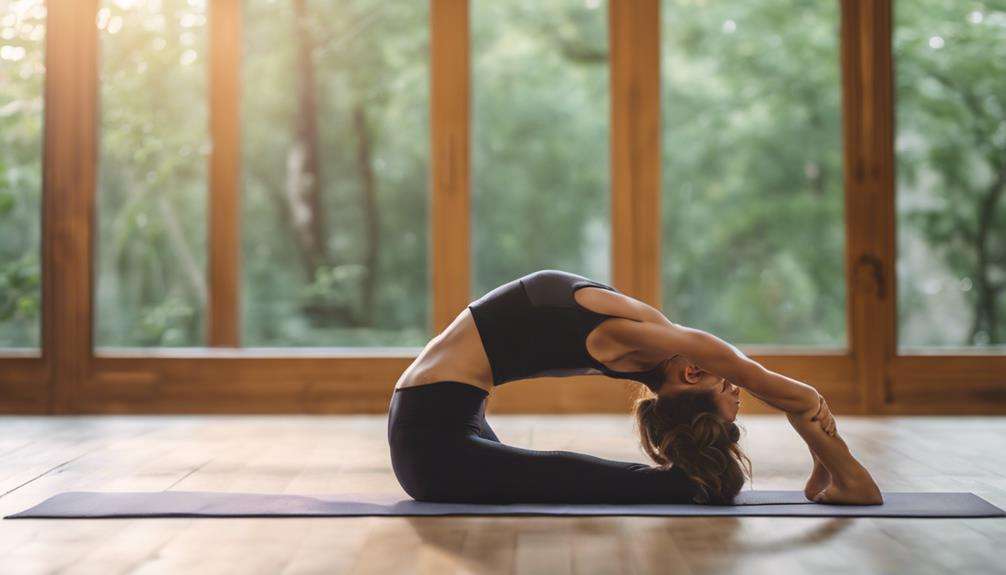
To improve your posture effectively, engaging in mind-body awareness exercises is essential for connecting your mental and physical aspects. These exercises, such as yoga and tai chi, focus on promoting mindfulness of body alignment and muscle engagement. By practicing mind-body awareness, you can enhance your proprioception and balance, leading to a better understanding of your body's positioning and movements. This increased awareness allows you to correct postural imbalances and reduce strain on your muscles and joints.
Mind-body exercises like yoga not only strengthen your muscles but also help you cultivate a deeper mind-body connection. Through these practices, you can learn to listen to your body's signals, adjust your posture accordingly, and prevent discomfort caused by poor alignment. By incorporating mind-body awareness exercises into your routine, you can foster a harmonious relationship between your mind and body, ultimately leading to improved posture and overall well-being.
Frequently Asked Questions
How Can I Improve My Posture and Body Alignment?
To improve your posture and body alignment, focus on incorporating mindfulness techniques for awareness, strength training for core support, stretching exercises for flexibility, and yoga poses for balance. Consider chiropractic adjustments, Pilates workouts, massage therapy, posture correctors, ergonomic workspace, and balance exercises for added benefits.
What Are the 4 Points to Align for Proper Posture?
To align for proper posture, focus on your ears, shoulders, hips, and ankles. Ensuring alignment of these key points supports a straight spine, reduces muscle strain, and enhances balance. Mindful movement, stretching, and core exercises can help improve your posture.
How Do I Fix My Body Alignment?
To fix your body alignment, start with mindfulness exercises, yoga techniques, and chiropractic adjustments. Incorporate breathing exercises, massage therapy, and ergonomic furniture. Engage in stretching routines, Pilates classes, and physical therapy. Embrace meditation practices for holistic alignment.
How Do I Align My Posture?
To align your posture effectively, focus on incorporating mindfulness techniques, yoga poses, breathing exercises, chiropractic adjustments, Pilates workouts, massage therapy, posture correctors, ergonomic chairs, stretching routines, and meditation practices into your daily routine for improved alignment and overall well-being.
Conclusion
To summarize, aligning your mind and body for posture is essential for overall health and well-being.
Did you know that poor posture can lead to increased stress and decreased energy levels?
By incorporating mindfulness, yoga, meditation, visualization, and mind-body awareness exercises into your daily routine, you can improve your posture and prevent negative effects on your body.
Take the time to prioritize your posture and reap the benefits of a healthier and more aligned body.

